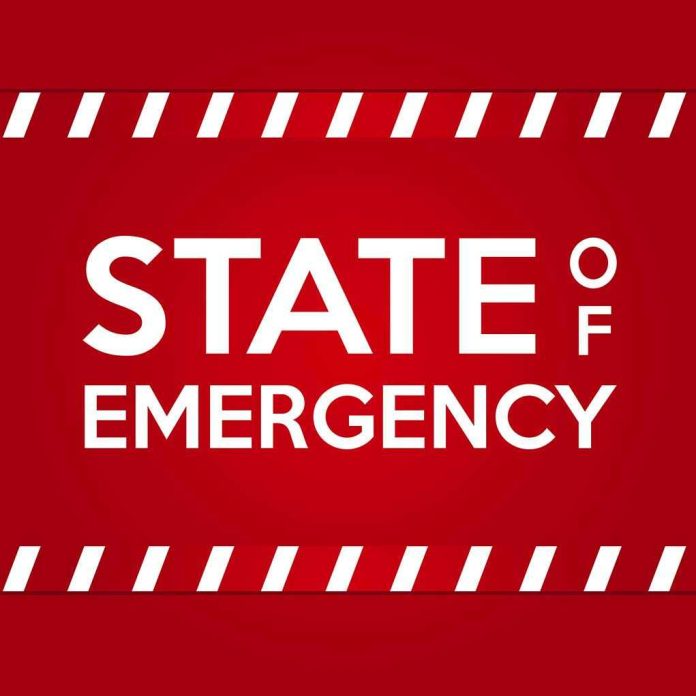
When 114 people die from a typhoon in a country that faces storms regularly, the real killer isn’t wind and rain—it’s decades of corruption and infrastructure failure masquerading as natural disaster preparedness.
Story Snapshot
- Typhoon Kalmaegi killed 114 people and displaced hundreds of thousands across central Philippines
- President Marcos Jr. declared state of emergency to expedite funds and prevent price gouging
- Survivors blame government corruption and substandard flood control infrastructure for amplifying casualties
- Over $45 million allocated for 500+ flood control projects in Cebu since 2016, yet critical infrastructure remains incomplete or defective
When Emergency Powers Become Necessary Admission of Failure
President Ferdinand Marcos Jr.’s declaration of a state of emergency following Typhoon Kalmaegi represents more than disaster response—it’s an acknowledgment that normal government channels have failed catastrophically. The emergency powers allow faster fund release and anti-hoarding measures, but they also bypass the bureaucratic systems that should have prevented this crisis through proper infrastructure investment and maintenance.
The death toll of 114 people and displacement of hundreds of thousands across Cebu and Negros provinces reveals the human cost of institutional neglect. Search and rescue operations continue, but survivors report receiving inadequate government assistance despite the emergency declaration’s promise of expedited aid distribution.
The $45 Million Question That Demands Answers
The most damning evidence of systemic failure lies in the numbers: over 500 flood control projects planned for Cebu province between 2016 and 2025, with more than $45 million allocated in just the last three years. Yet when Typhoon Kalmaegi struck, critical infrastructure proved either incomplete or substandard, turning what should have been manageable flooding into a deadly disaster.
Survivors didn’t mince words in their assessment, calling the disaster “man-made” and pointing directly at corruption in public works projects. Their anger reflects a deeper truth about governance failure—when emergency funds disappear into phantom projects or shoddy construction, natural disasters become amplified tragedies that claim lives unnecessarily.
Infrastructure Theater Versus Real Protection
The Public Works Secretary’s admission that flood control measures were inadequate exposes the gap between political promises and engineering reality. Building river walls without addressing upstream water management is like putting bandages on arterial bleeding—it creates the appearance of action while ignoring fundamental solutions that could actually save lives.
Expert analysis consistently points to the need for comprehensive upstream flood control, including dam construction, rather than piecemeal projects that look good in budget presentations but fail when tested by real storms. The Philippines’ position in the Pacific typhoon belt means these tests come regularly, making infrastructure quality literally a matter of life and death.
Pattern Recognition in Disaster Governance
Typhoon Kalmaegi follows a disturbingly familiar pattern established by previous disasters like Typhoon Haiyan in 2013, which killed over 6,000 people. Each disaster exposes the same vulnerabilities: inadequate infrastructure, slow emergency response, and corruption that diverts funds from life-saving projects to politically connected contractors who deliver substandard work.
The state of emergency powers being used to prevent food hoarding and price gouging also reveal another layer of systematic failure. When disasters strike, opportunistic profiteering should be prevented through robust market oversight and emergency supply chains, not emergency decrees that essentially admit the government lacks normal mechanisms to protect citizens from exploitation during crises.
Sources:
Philippines Declares State of Emergency for Tropical Storm Fung-Wong Following Typhoon Kalmaegi













